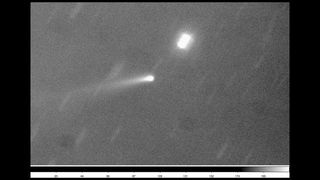Planets and Moons
ID: 4159
Comet 209P/LINEAR is a short-period comet discovered in 2004.
The comet's orbit has been altered by the gravitational perturbations from Jupiter so that the dust left behind in the comet's path will now cross the orbit of Earth. The dust has a chance of appearing in the night sky of May 23-24 as a new meteor shower appearing to radiate from the constellation Camelopardalis.
This visualization opens with an overview of the comet orbit, which lies between the orbit of Jupiter and Earth. The camera then zooms-in to a close-up of the comet orbit intesecting the orbit of the Earth on May 23-24, 2014. Note that the comet itself, which is very small and faint, passes behind the Earth and poses no risk of collision.
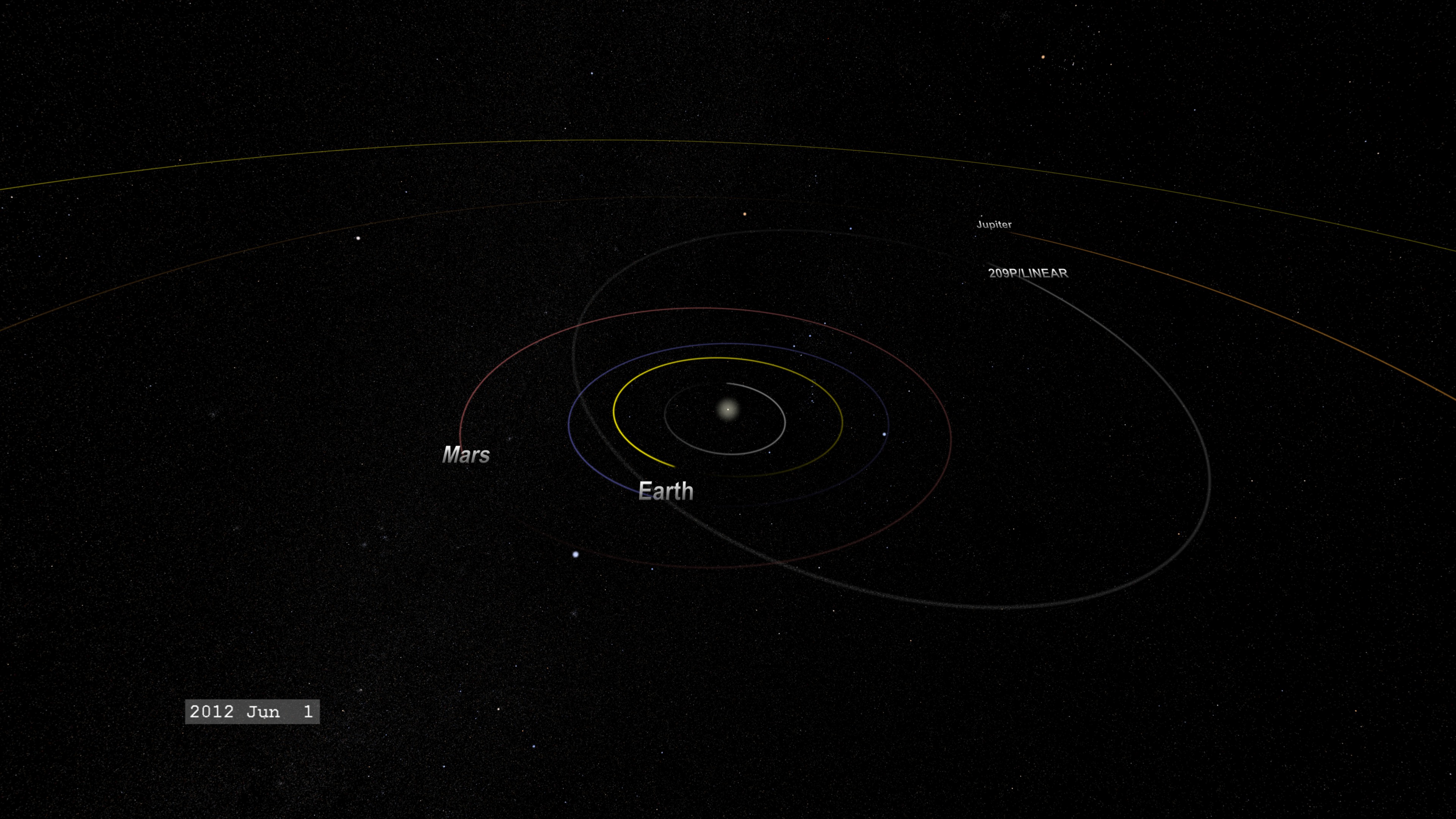
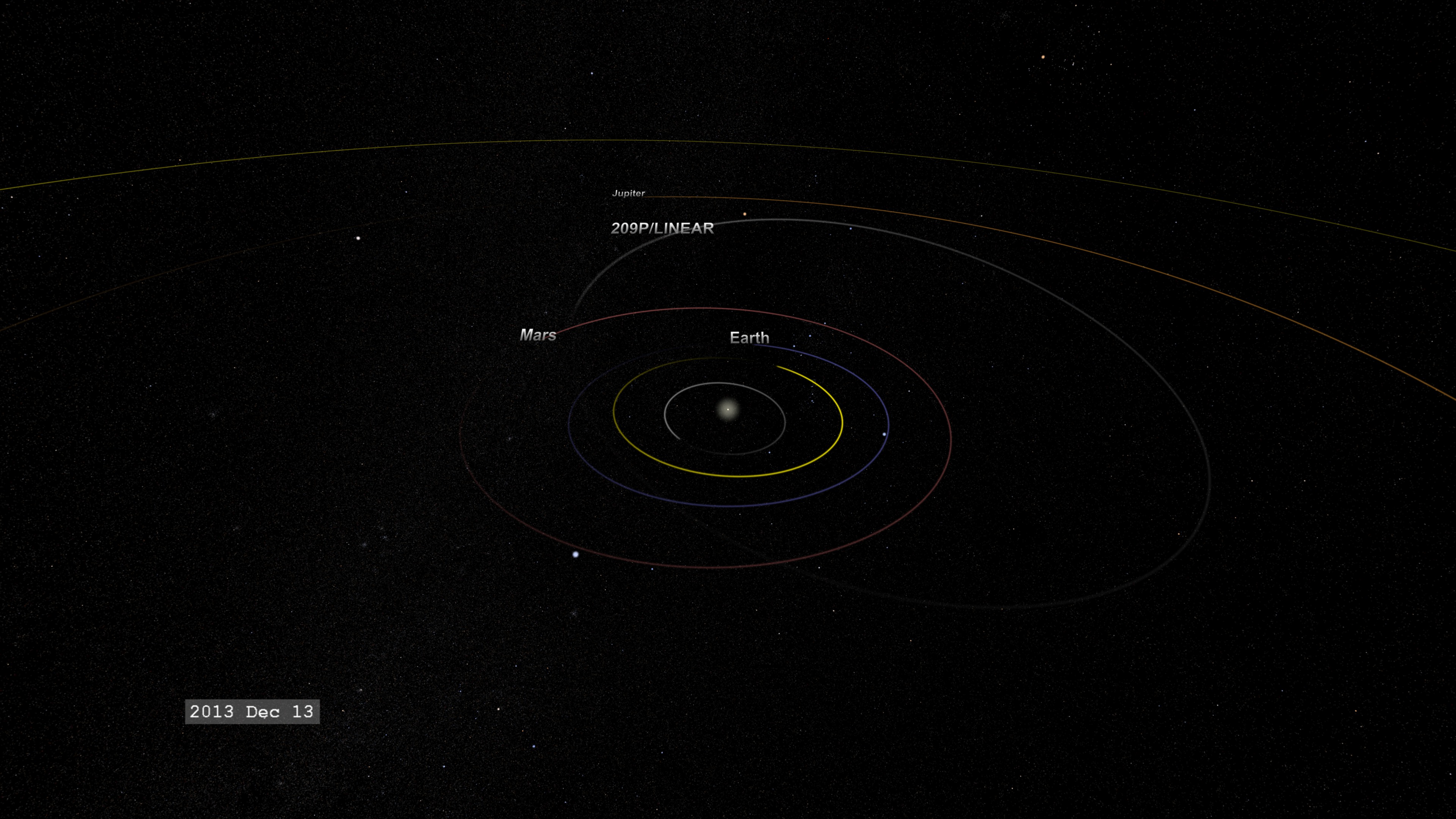
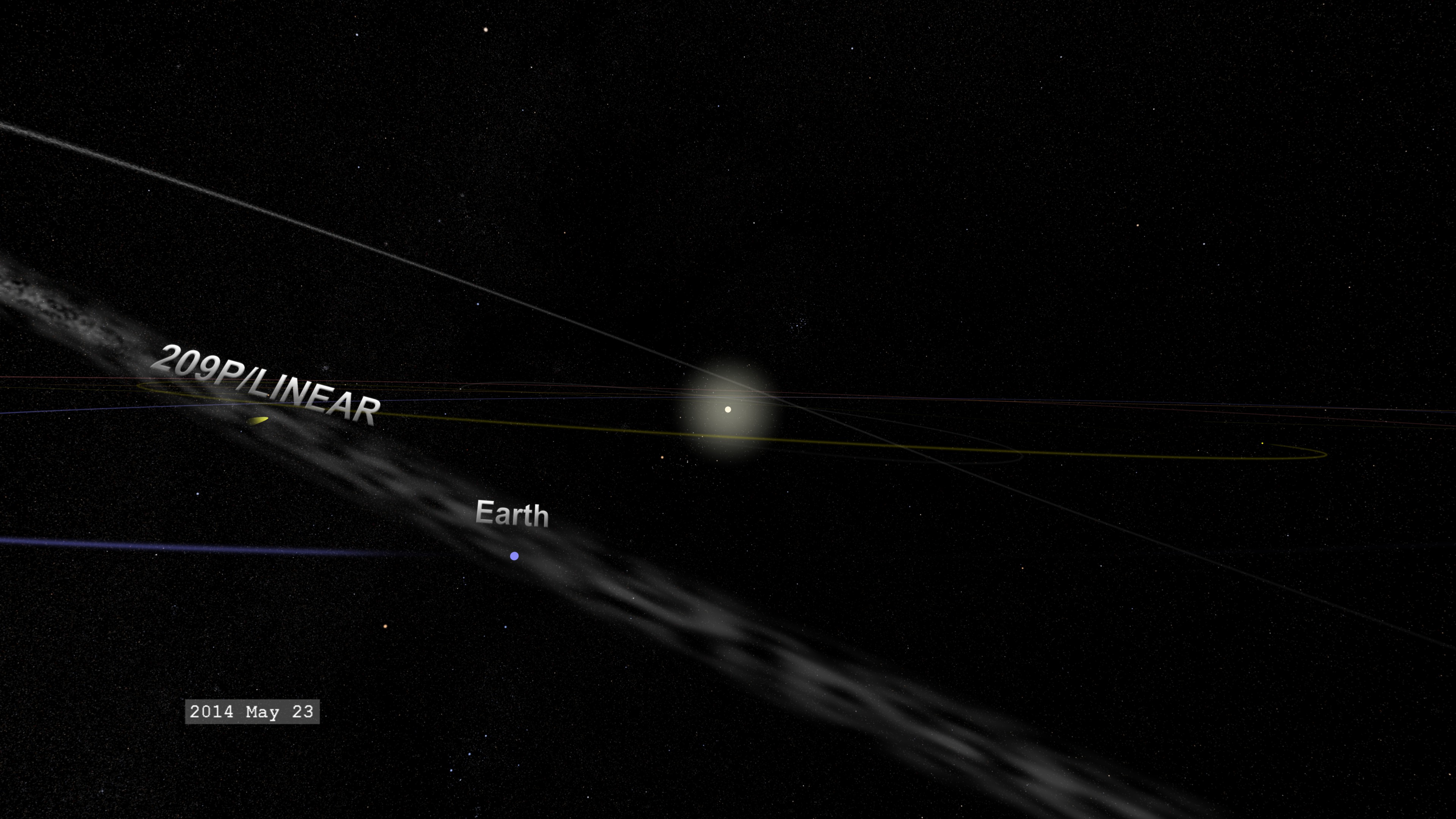
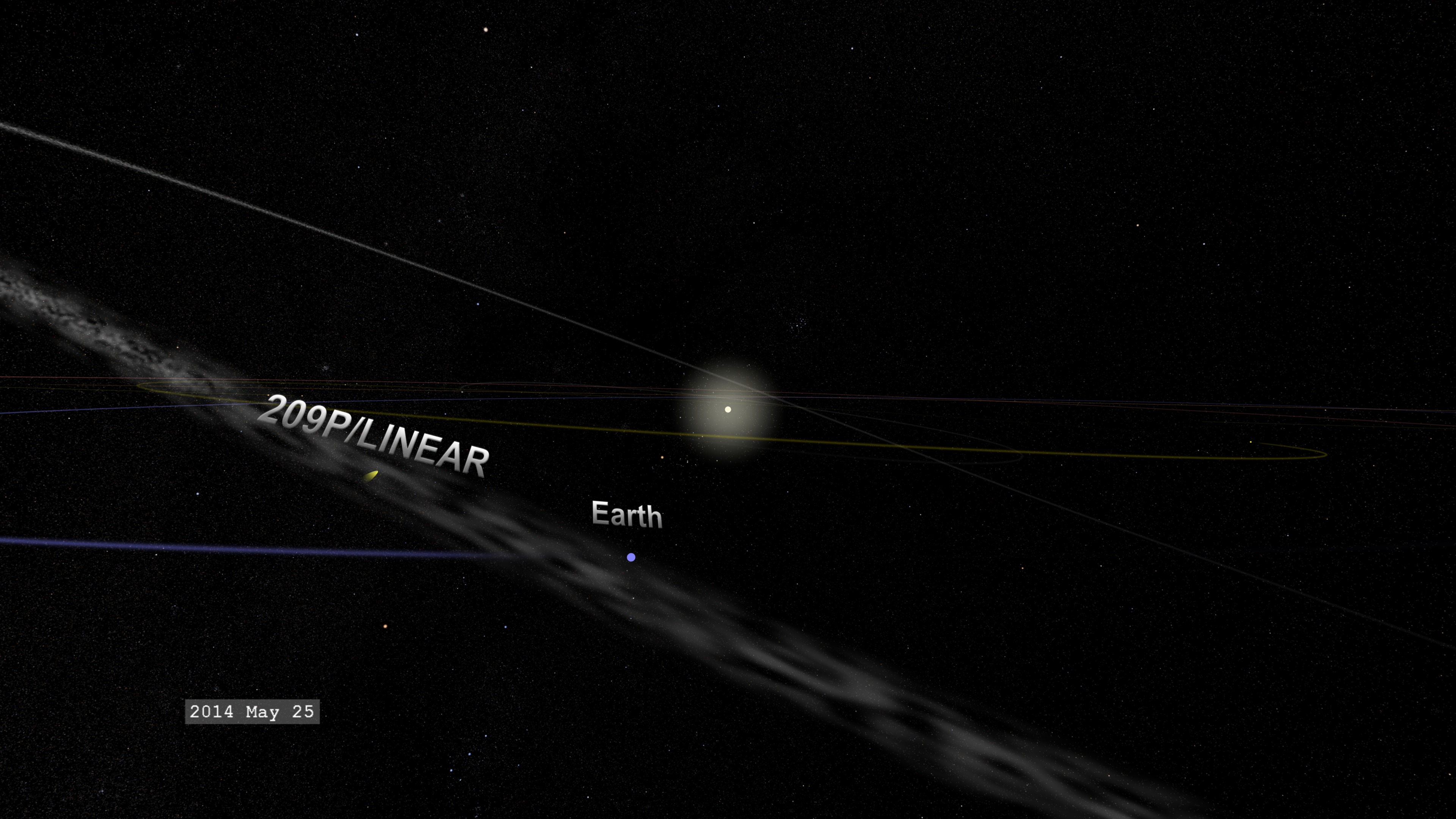
The Dust Trail of Comet 209P/LINEAR
The comet's orbit has been altered by the gravitational perturbations from Jupiter so that the dust left behind in the comet's path will now cross the orbit of Earth. The dust has a chance of appearing in the night sky of May 23-24 as a new meteor shower appearing to radiate from the constellation Camelopardalis.
This visualization opens with an overview of the comet orbit, which lies between the orbit of Jupiter and Earth. The camera then zooms-in to a close-up of the comet orbit intesecting the orbit of the Earth on May 23-24, 2014. Note that the comet itself, which is very small and faint, passes behind the Earth and poses no risk of collision.




Related
Visualization Credits
Tom Bridgman (Global Science and Technology, Inc.): Lead Animator
Dan Gallagher (USRA): Producer
David Ladd (USRA): Producer
Michelle Handleman (USRA): Producer
Carl Hergenrother (The University of Arizona): Scientist
Stefanie Milam (NASA/GSFC): Scientist
Laurence Schuler (ADNET Systems, Inc.): Project Support
Ian Jones (ADNET Systems, Inc.): Project Support
Dan Gallagher (USRA): Producer
David Ladd (USRA): Producer
Michelle Handleman (USRA): Producer
Carl Hergenrother (The University of Arizona): Scientist
Stefanie Milam (NASA/GSFC): Scientist
Laurence Schuler (ADNET Systems, Inc.): Project Support
Ian Jones (ADNET Systems, Inc.): Project Support
Please give credit for this item to:
NASA's Scientific Visualization Studio
NASA's Scientific Visualization Studio
Short URL to share this page:
https://svs.gsfc.nasa.gov/4159
Data Used:
Note: While we identify the data sets used in these visualizations, we do not store any further details nor the data sets themselves on our site.
Keywords:
SVS >> Comet
SVS >> HDTV
NASA Science >> Planets and Moons
SVS >> Meteor
https://svs.gsfc.nasa.gov/4159
Data Used:
JPL DE421 also referred to as: DE421
Ephemeris - NASA/JPL
Planetary ephemerides
JPL/Horizon Orbital Ephemerides
Ephemeris - NASA/JPL
Planetary ephemerides
Keywords:
SVS >> Comet
SVS >> HDTV
NASA Science >> Planets and Moons
SVS >> Meteor
